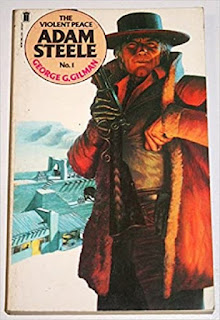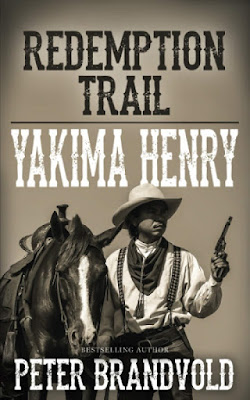I’ve been
reading this big e-book anthology for the past year or so, a story or two (or
three) between novels, or when I just didn’t have the attention span for
anything longer, an all too common condition these days. I’ve also discovered
that they’re also great to read while sitting and waiting at the doctor’s office,
fast-paced and always interesting. The contents are as follows, all of them
originally published in SPICY-ADVENTURE STORIES, with a few exceptions as
noted.
THE SHANGHAI JESTER, by Robert Leslie Bellem (July 1934)
BLACK MURDER,
by Carl Moore (Edwin Truett Long) (April 1935)
SUEZ SOUVENIR,
by Jerome Hyams (Robert Leslie Bellem) (SPICY DETECTIVE STORIES, September
1934)
THE HOUSE OF
WEIRD SLEEP, by Charles R. Allen (January 1935)
CAVE OF THE
CRISS-CROSS KNIVES, by C.C. Spruce (April 1935)
HOT BLOOD, by
Arthur Wallace (April 1935)
THE MOON GOD
TAKES, by Robert Leslie Bellem (SPICY MYSTERY STORIES, December 1936)
SMUGGLER’S
ISLAND, by Atwater Culpepper (April 1935)
TALISMAN OF
DOOM, by James W. Marvin (Robert Leslie Bellem) (April 1935)
TATTOOED
BLONDE, by Ellery Watson Calder (Robert Leslie Bellem) (April 1935)
WHITE MEAT, by
Don King (Gunard Hjertstedt, better known as Day Keene) (April 1934)
RED BAMBOO, by
Jason Lyttell (SPICY MYSTERY STORIES, June 1935; apparently Lyttell’s only
published story)
THE BLACK 13,
by Ellery Watson Calder (Robert Leslie Bellem) (August 1935)
THE ISLE OF
MONSTERS, by Jane Thomas (August 1935)
TUFFY AND HIS
HAREM, by Nick Anderson (August 1935; the second of only two stories by
Anderson)
QUEEN OF THE
FLAMING ARROWS, by Frank E. Marks (September 1936)
VALLEY OF
BLOOD, by Lew Merrill (Victor Rousseau) (September 1936)
LUST TO KILL,
by Jose Vaca (Edwin Truett Long) (March 1937)
MARRIAGE FOR
MURDER, by C.A.M. Donne (Donald Clough Cameron) (March 1937)
MESSAGE TO
MORGAN, by Guy Russell (March 1937)
RIVER OF FIRE,
by Ken Cooper (March 1937)
SKY GODDESS, by
Clive Trent (Victor Rousseau) (March 1937)
LEAF OF THE
LOTUS, by Guy Russell (May 1937)
THE DEVIL'S
DAUGHTER, by Clark Nelson (house name) (December 1939)
ADVENTURE'S
END, by Robert Leslie Bellem (April 1935)
As you might expect, these stories tend to run together after a while, which is
why you need to space them out. Also as you might expect, they’re all lurid,
over the top, and very politically incorrect. But they’re full of action and
enormous fun to read, at least for me. The Spicy level is really pretty tame.
Girls tend to lose their clothes fairly often, leading to frequent flowery
descriptions of their anatomy, but that’s about it. The stories all fade to
black before anything actually happens.
With seven stories, more than a fourth of the total, Robert Leslie Bellem
dominates the table of contents, which comes as no surprise. And every one of
Bellem’s stories is good, with “Talisman of Doom”, a World War I espionage yarn
under the name James W. Marvin, standing out in my memory. For sheer luridness,
it would be hard to top “White Meat” by Day Keene (I’m going to call him that
since that’s the name he’s best known by) and “River of Fire” by Ken Cooper. I
didn’t know Keene had written for the Spicy Pulps, but I’m not surprised. I don’t
know anything about Cooper except that he was fairly prolific, although nowhere
near Bellem-level.
Honestly, some modern readers are going to find these stories offensive. There’s
little characterization, and the plots are rushed and don’t always make sense.
But I thoroughly enjoyed this collection, and it’s going on my list of top ten
favorite books I read this year. I’m just a little sad that I finished it and
don’t have more of them to read when I don’t feel like tackling anything else.
But wait. What’s this I see on my Kindle? THE E. HOFFMANN PRICE SPICY ADVENTURE
MEGAPACK, you say? Fourteen stories by another of the prolific contributors to
the Spicy Pulps who doesn’t have any stories in the collection I just
finished? Well, all right. I know what I’ll be reading between books and in
doctor’s offices for a while.








































